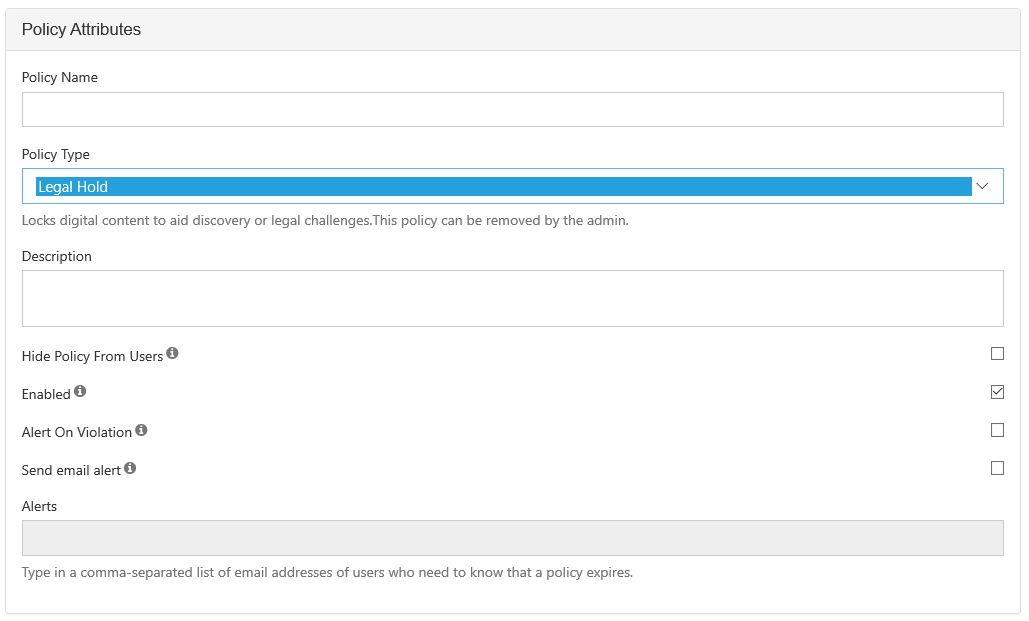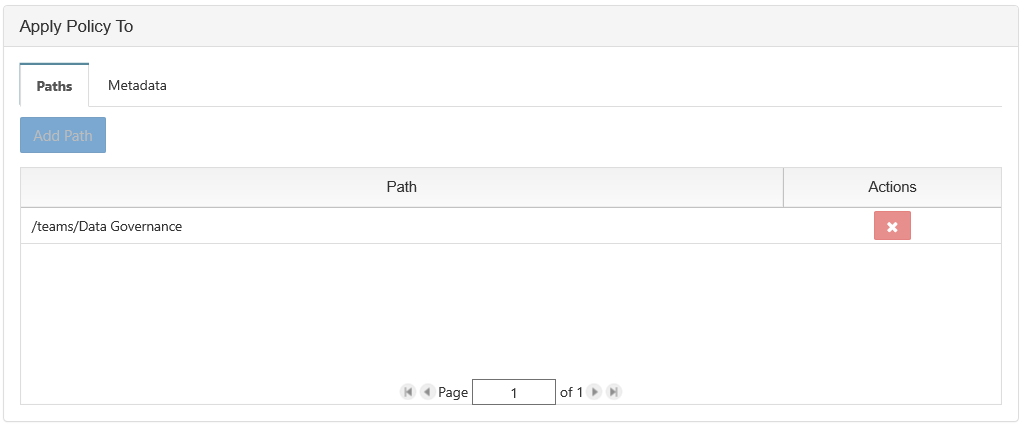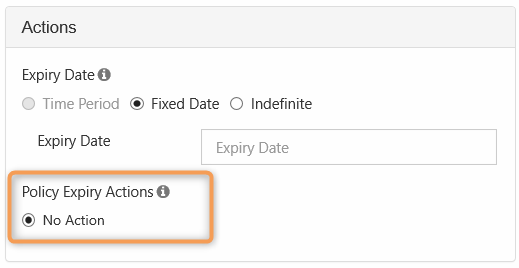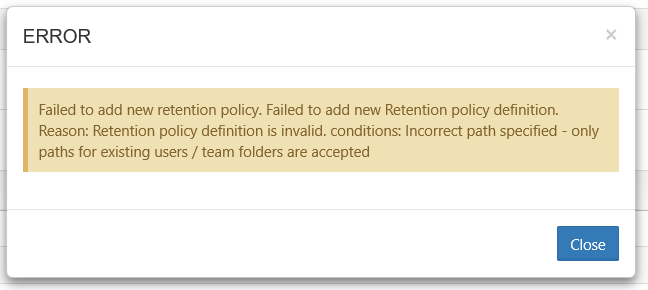Create a Legal Hold Policy
![]() A Legal Hold is designed to retain data, therefore, there is no deletion or move option available when this policy is in effect.
A Legal Hold is designed to retain data, therefore, there is no deletion or move option available when this policy is in effect.
Legal Holds cannot be removed once applied unless an expiration fixed date is set.
The following table identifies what actions are blocked for a Legal Hold type of retention policy.
| Policy Type | Reads Blocked | Moves Blocked | Copies Blocked | Updates Blocked | Deletes Blocked | Policy Length | Expiration Actions |
|---|---|---|---|---|---|---|---|
| Legal Hold | NO | YES | NO | YES | YES |
|
|
Copies cannot be created if there is a retention hold on the destination folder that prevents updates.

In the world of litigation, a legal hold is a notification
- It is sent from an organization's legal team to employees
- It instructs them not to delete electronically stored information (ESI)
- It also instructs then not to discard any paper documents that may be relevant to a new or imminent legal case.
FileCloud allows administrators to place a legal hold on ESI.
- FileCloud's Legal Hold policy prevents any of the attached file to be moved
- FileCloud's Legal Hold policy prevents any of the attached file to be changed in any way
- FileCloud's Legal Hold policy prevents any of the attached file to be deleted (either for a fixed number of days or indefinitely)
Creating the Policy

To create a Legal Hold Policy:
- Log in to the Admin Portal.
- From the left navigation pane, select Retention.
- On the Manage Retention Policies screen, click the Add Policy button.

| Property | Description |
|---|---|
| Policy Name | A string of characters, letters, and numbers that provide a title for the policy |
| Policy Type | Select Legal Hold |
| Description |
|
| Hide Policy from Users |
|
| Alert on Violation | Displays an alert in the Admin portal on the Governance dashboard.
|
| Send email alert | Notifies all provided recipients that there are only 7 days until the policy expires.
|
| Alerts | A list of email addresses separated by a comma who will receive the email notification that there are only 7 days until the policy expires. |
The Path and the Metadata tabs allow you to define the conditions that specify how the policy will be applied in the system.

Add a Path
Add Path allows you to define a folder that a policy will apply to AS WELL AS all the files and sub-folders it contains
| What you CAN do in the Path field | What you CANNOT do in the Path field |
|---|---|
|
|
When creating the policy the full path doesn't have to exist, however. At a minimum:
|
This will prevent you from saving the policy
|
Configure Metadata
Data that provides additional information about files and folders is called Metadata.
- To specify files and folders that this policy should apply to, you can use metadata sets, attributes, and tags.
- You can use metadata to apply a policy to all files that meet the metadata conditions even if they are not in the same folder.
You can select metadata from the following existing attributes or sets:
- Default sets = provided with FileCloud and applies to every folder and cannot be modified
- Built-In sets = provided with FileCloud and includes the Document Life Cycle and Image metadata sets
- Custom attributes and sets = created by administrators in the Admin Portal
For more information about metadata, see Managing Metadata.
Legal holds can expire in either a Fixed Date or be set to Indefinite.

To set a fixed date:
- In the Actions section, click Fixed Date.
- Click in the Expiry Date text box.
- A calendar will be shown with the current month.
- Select a date from the calendar.
